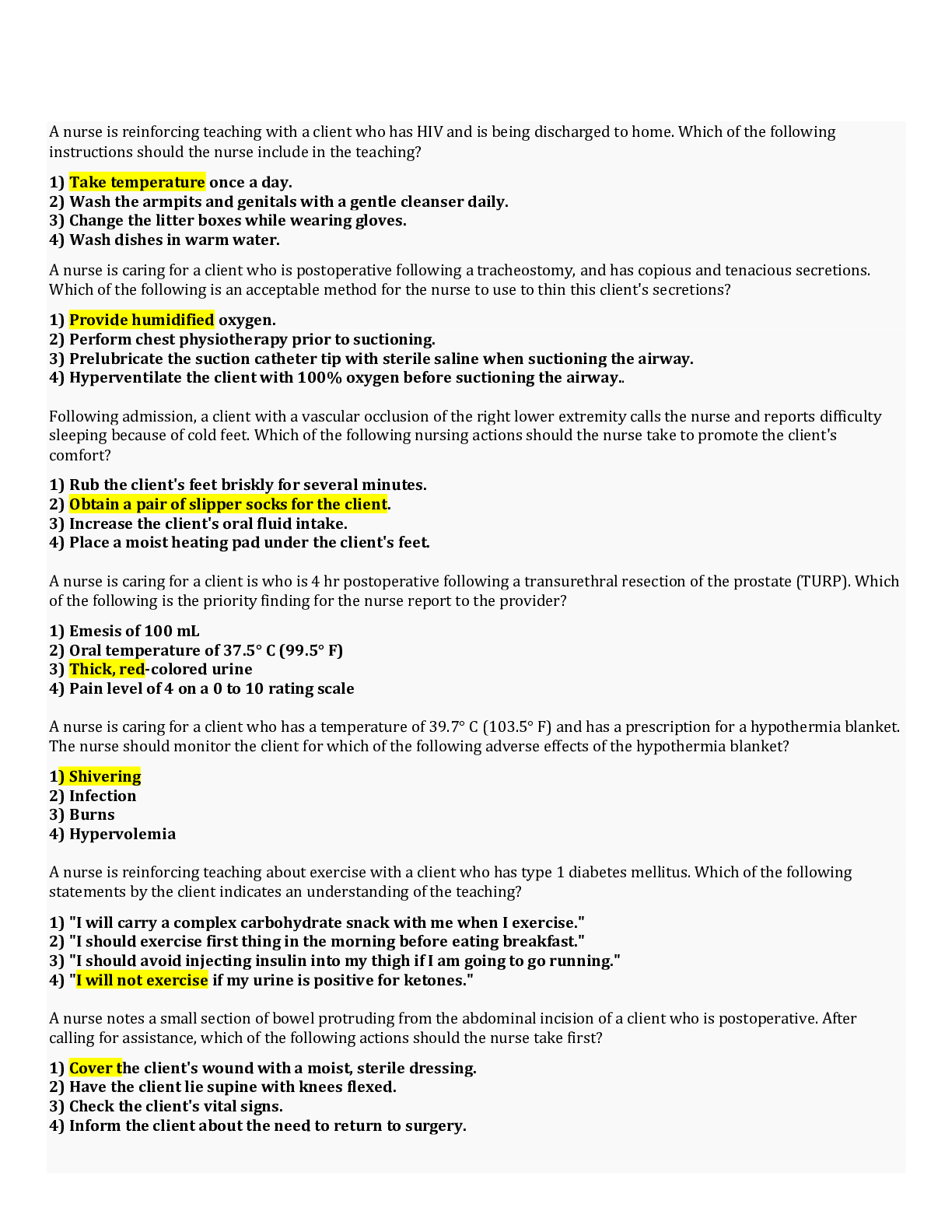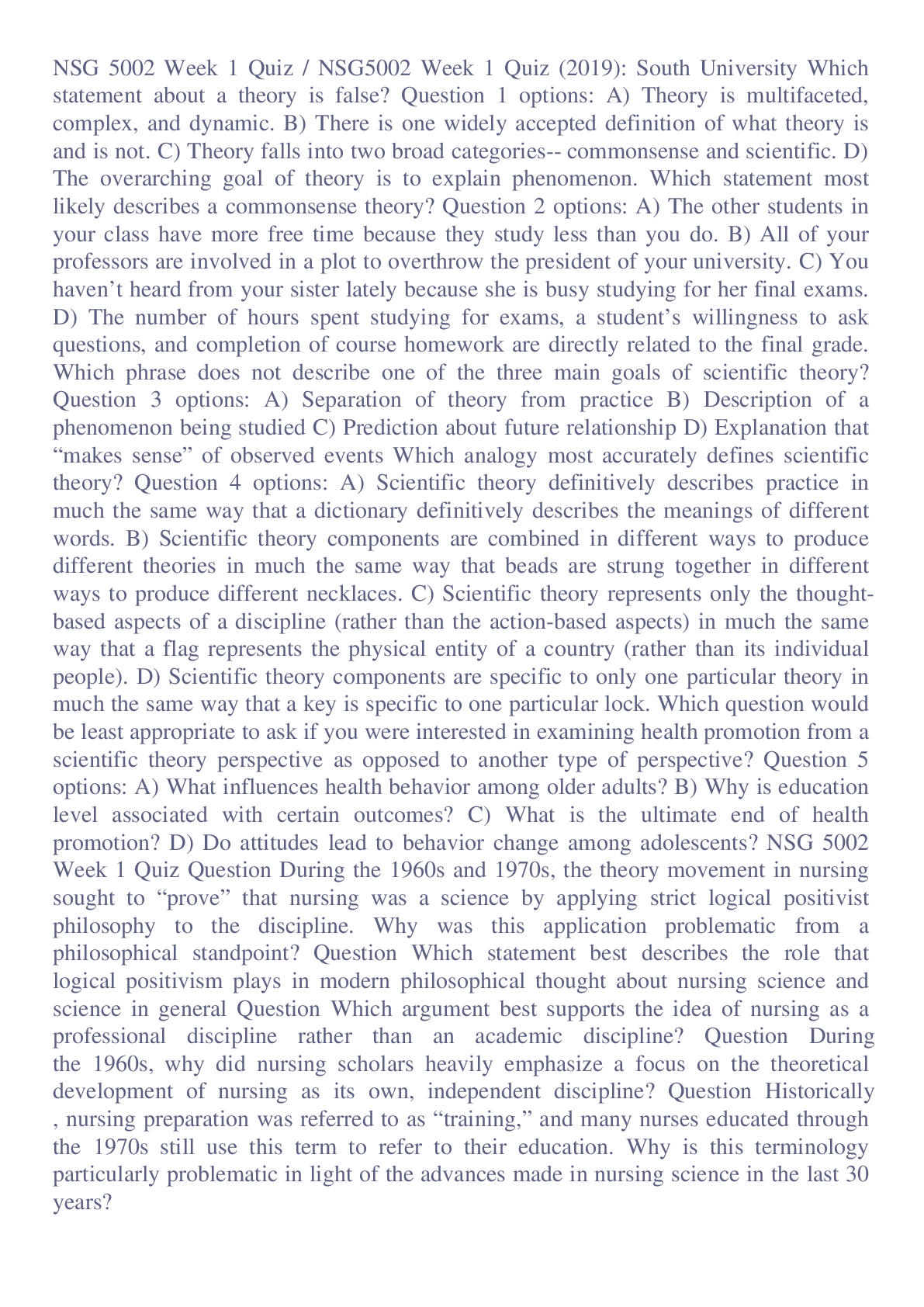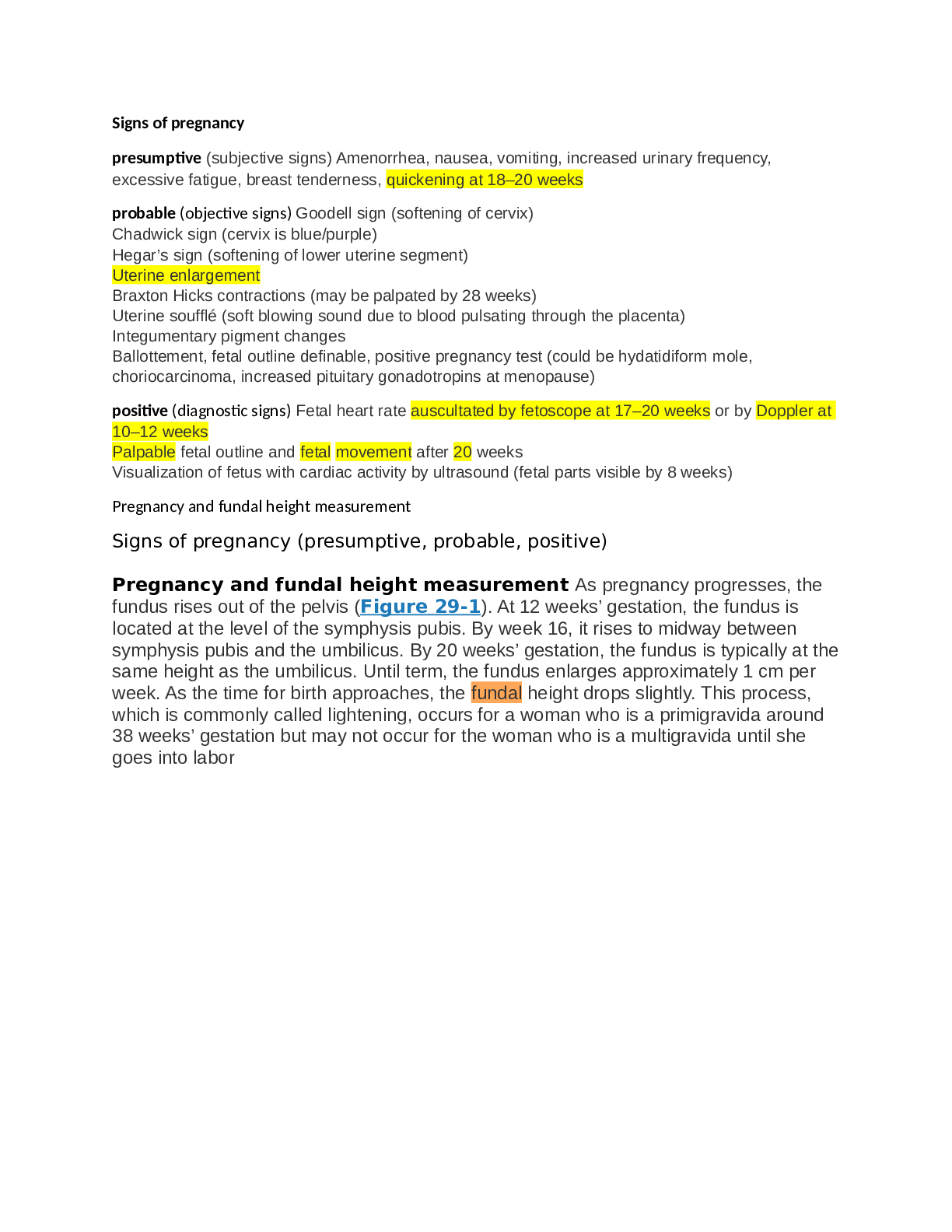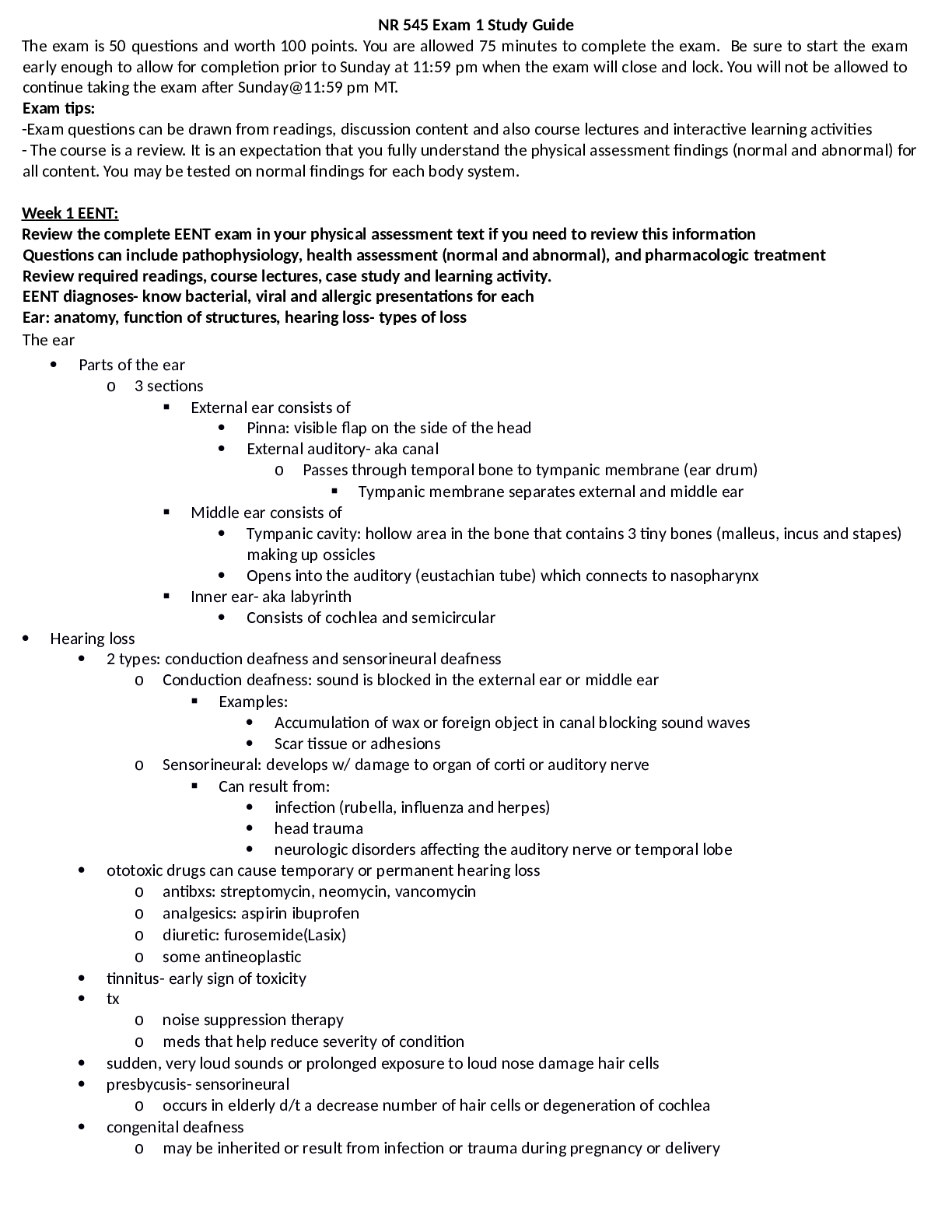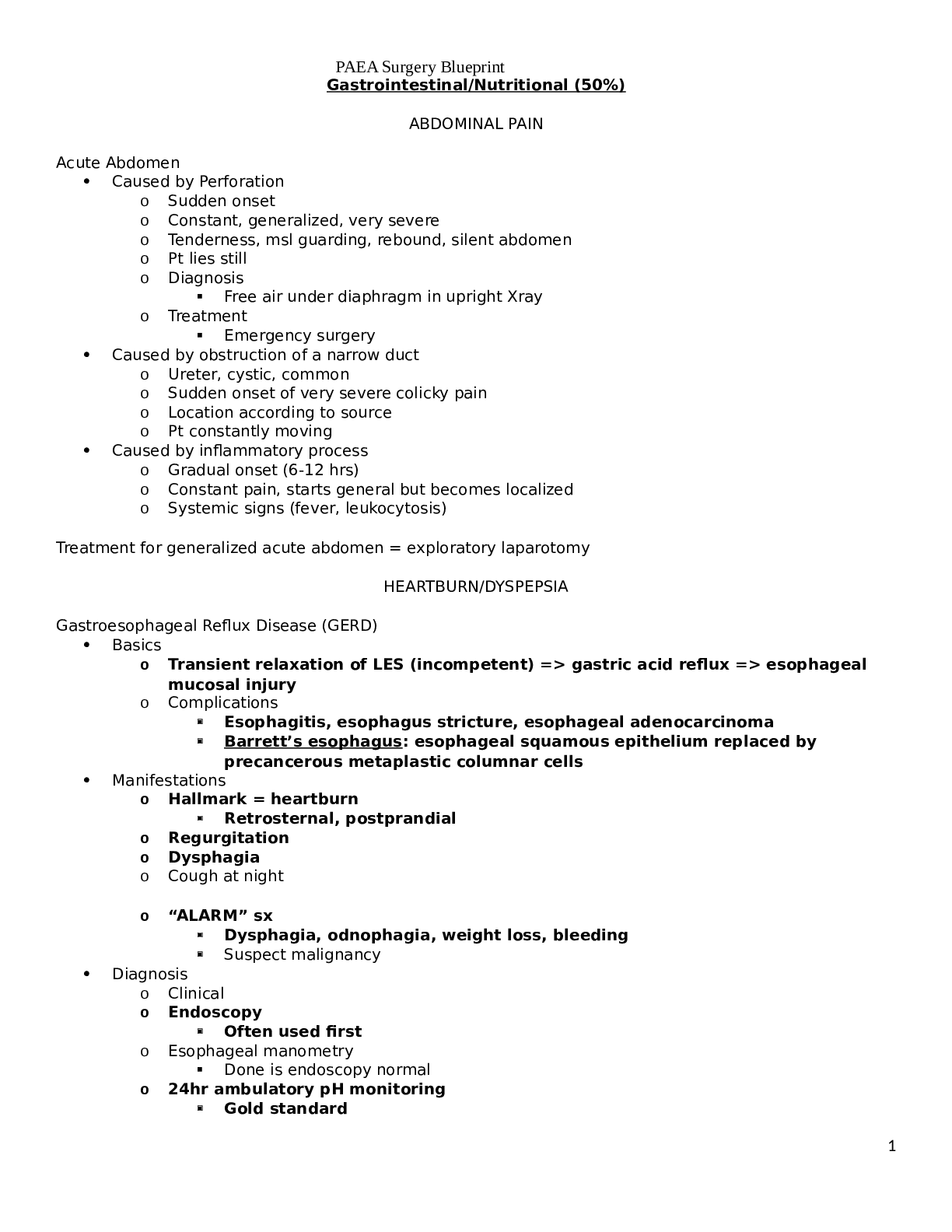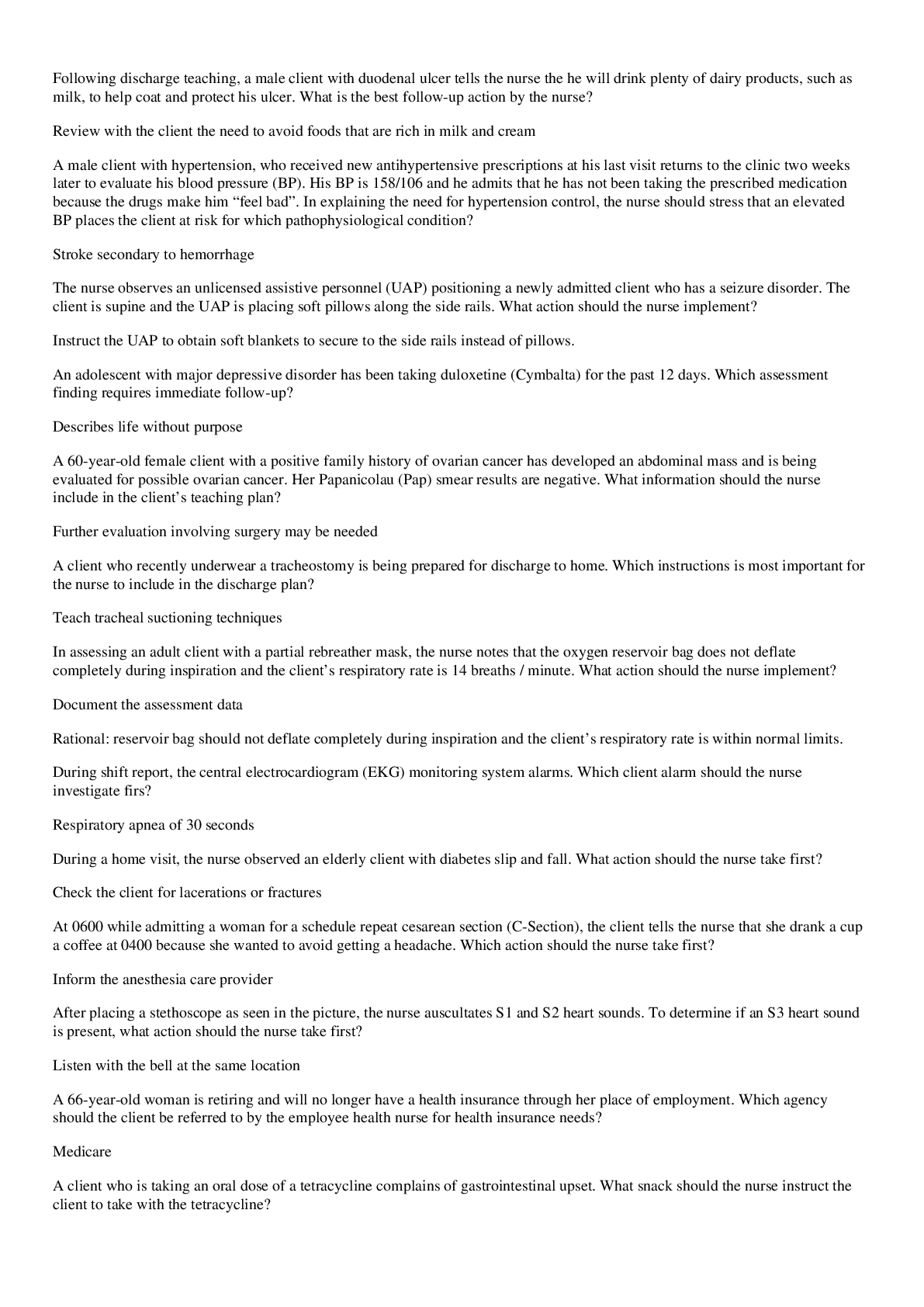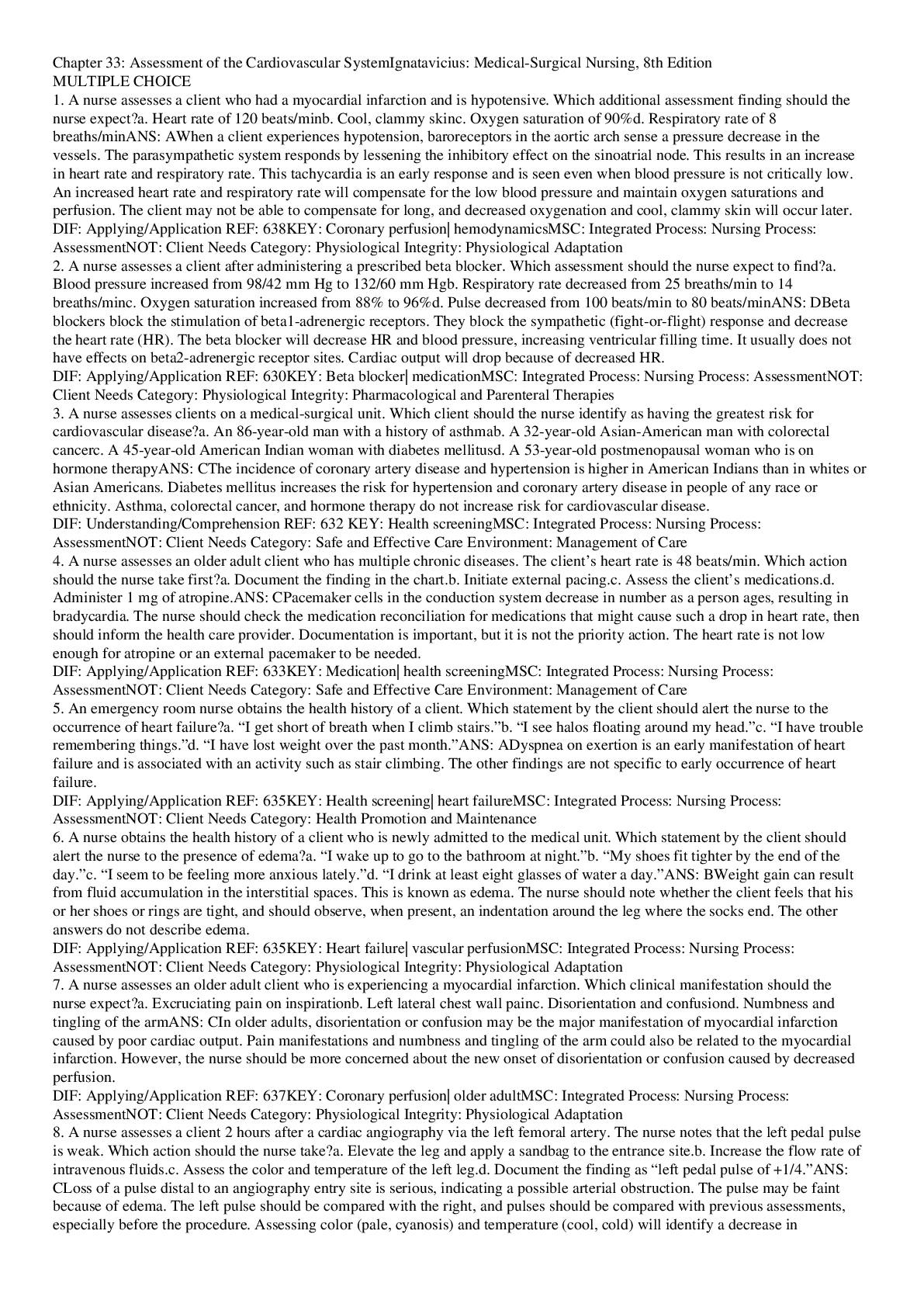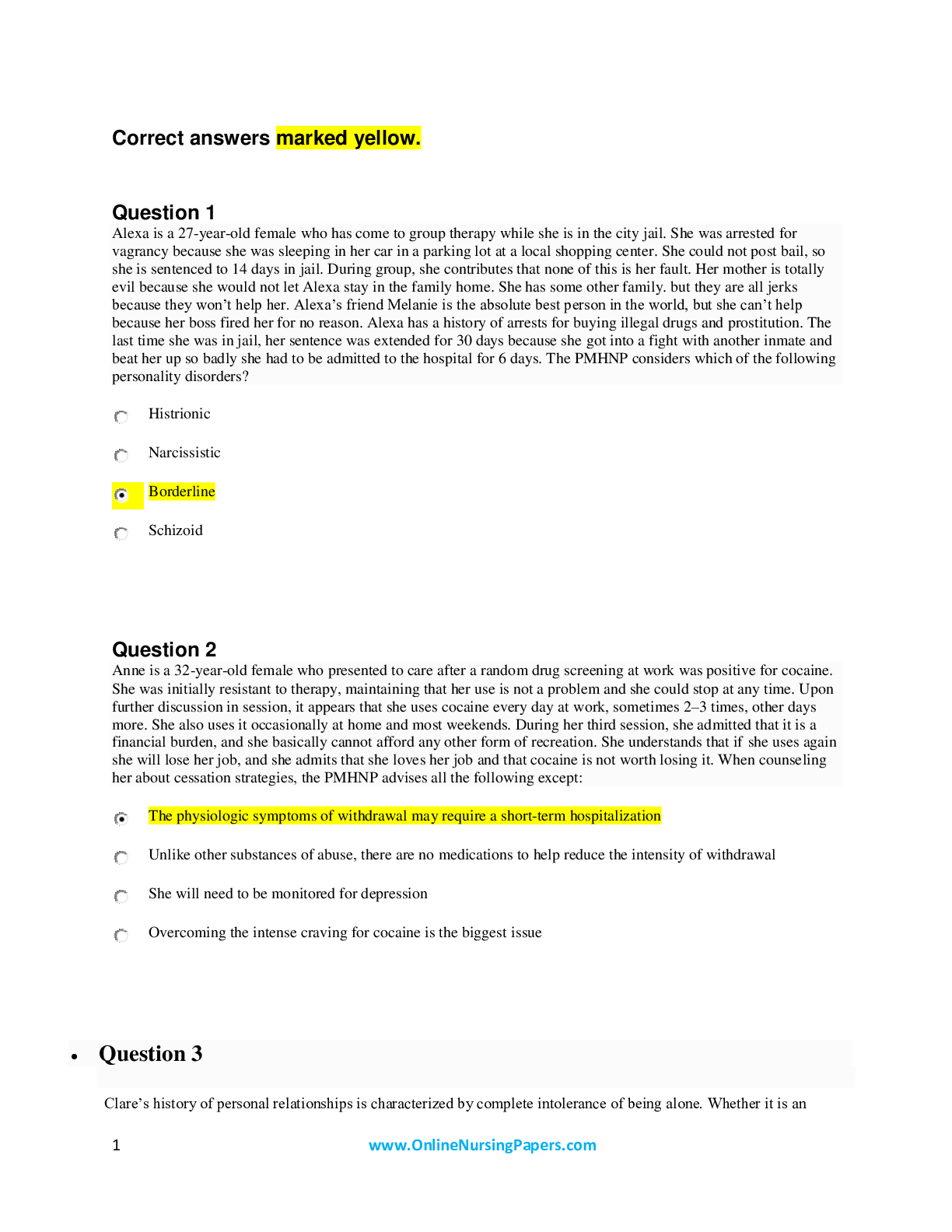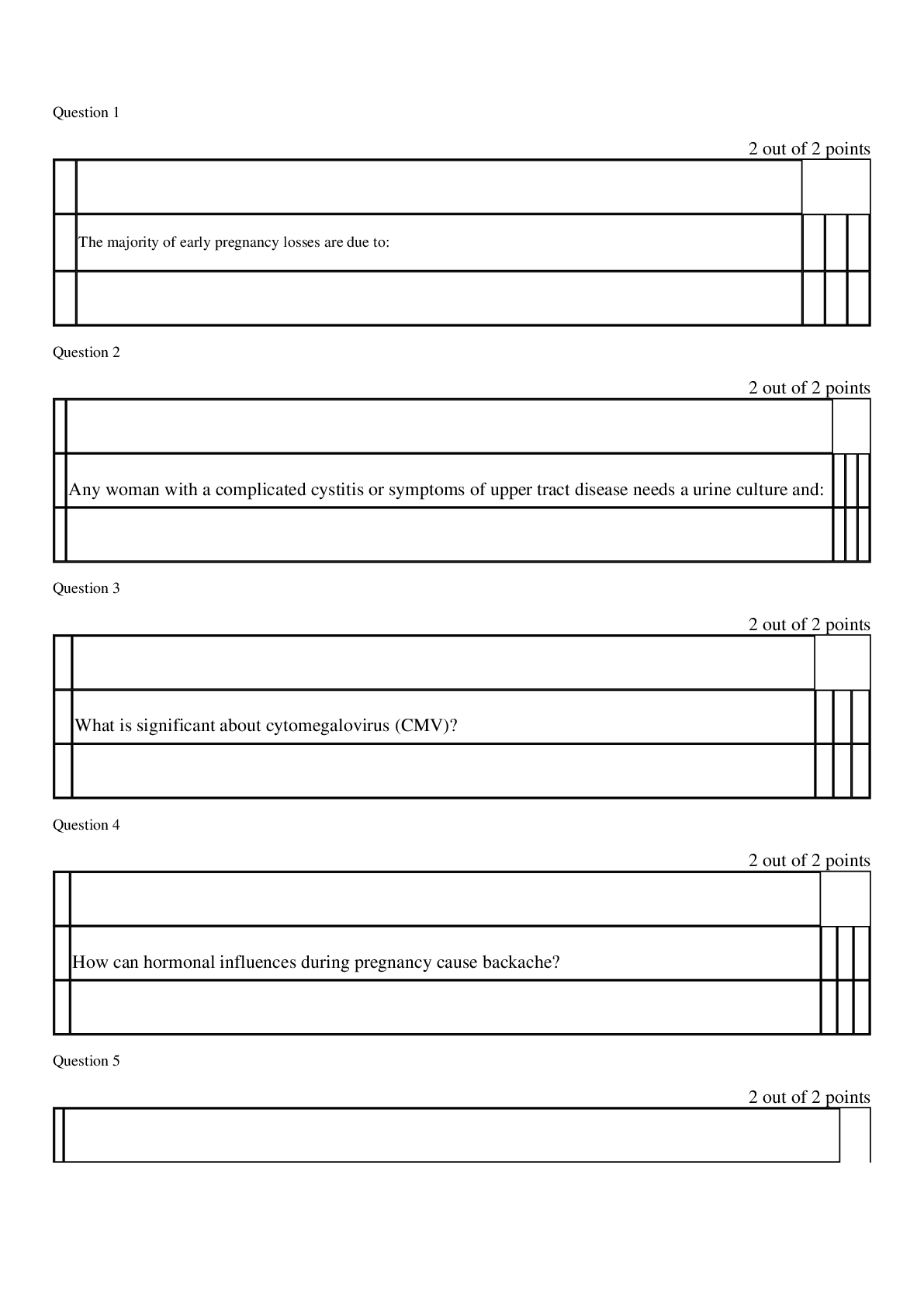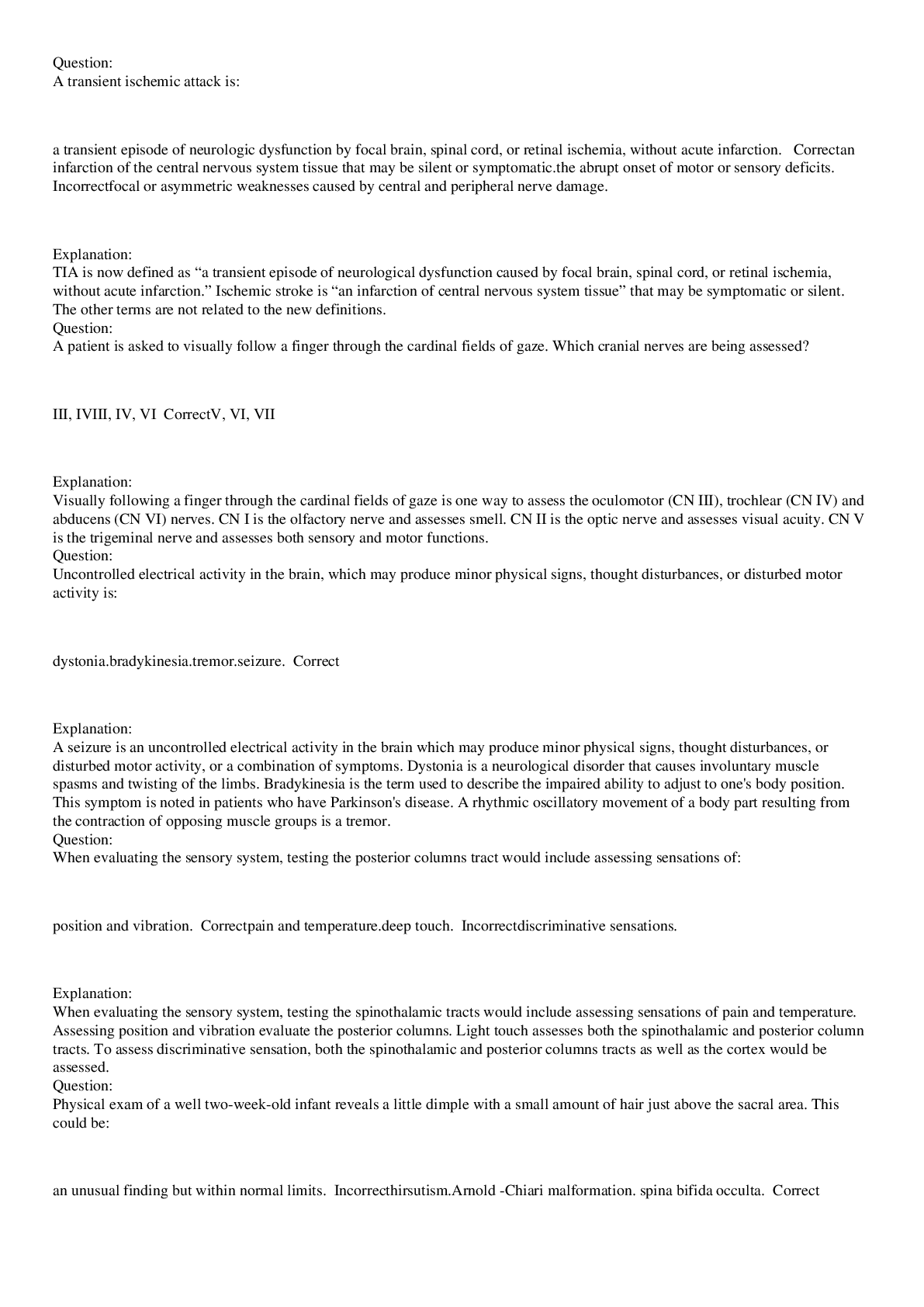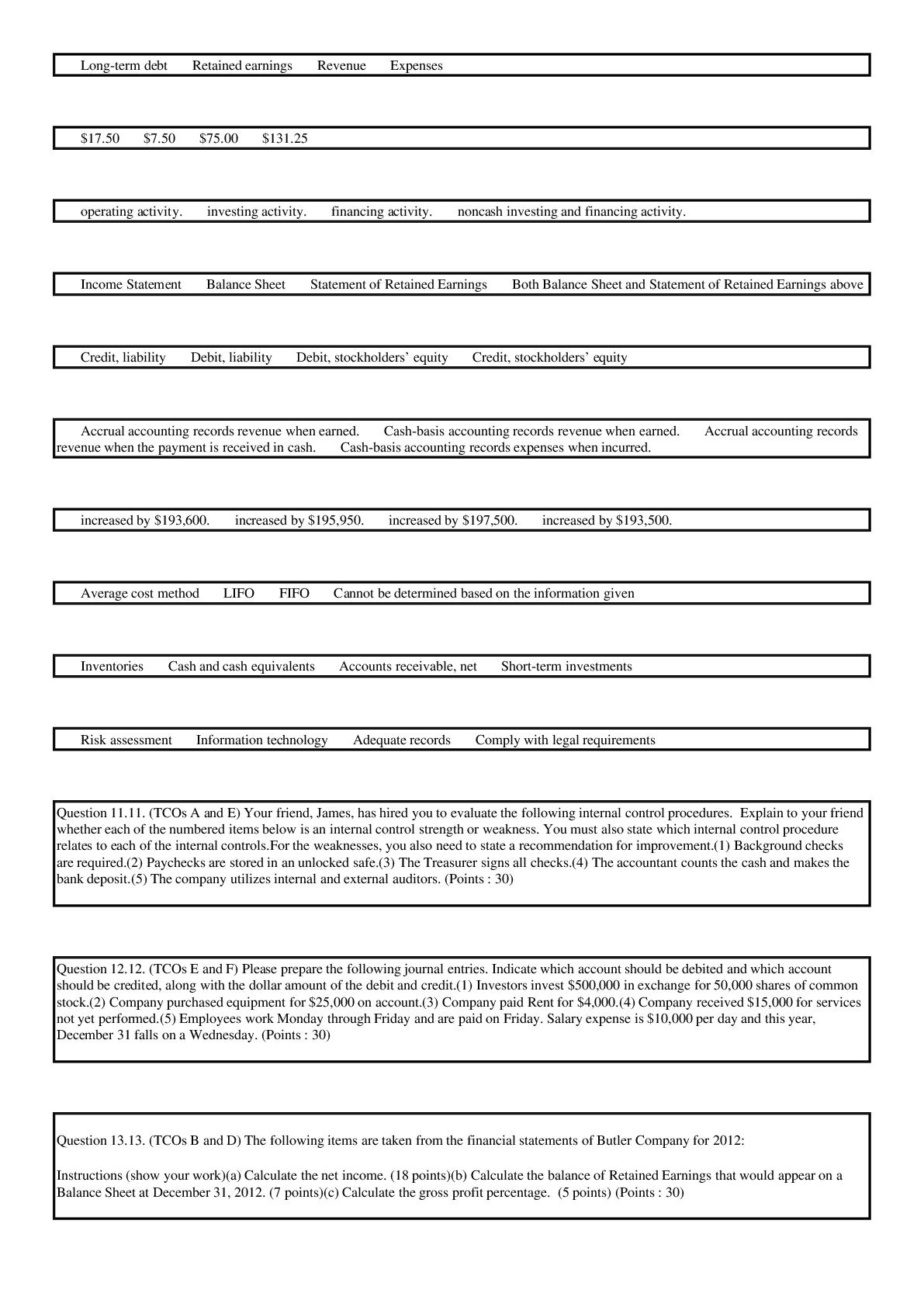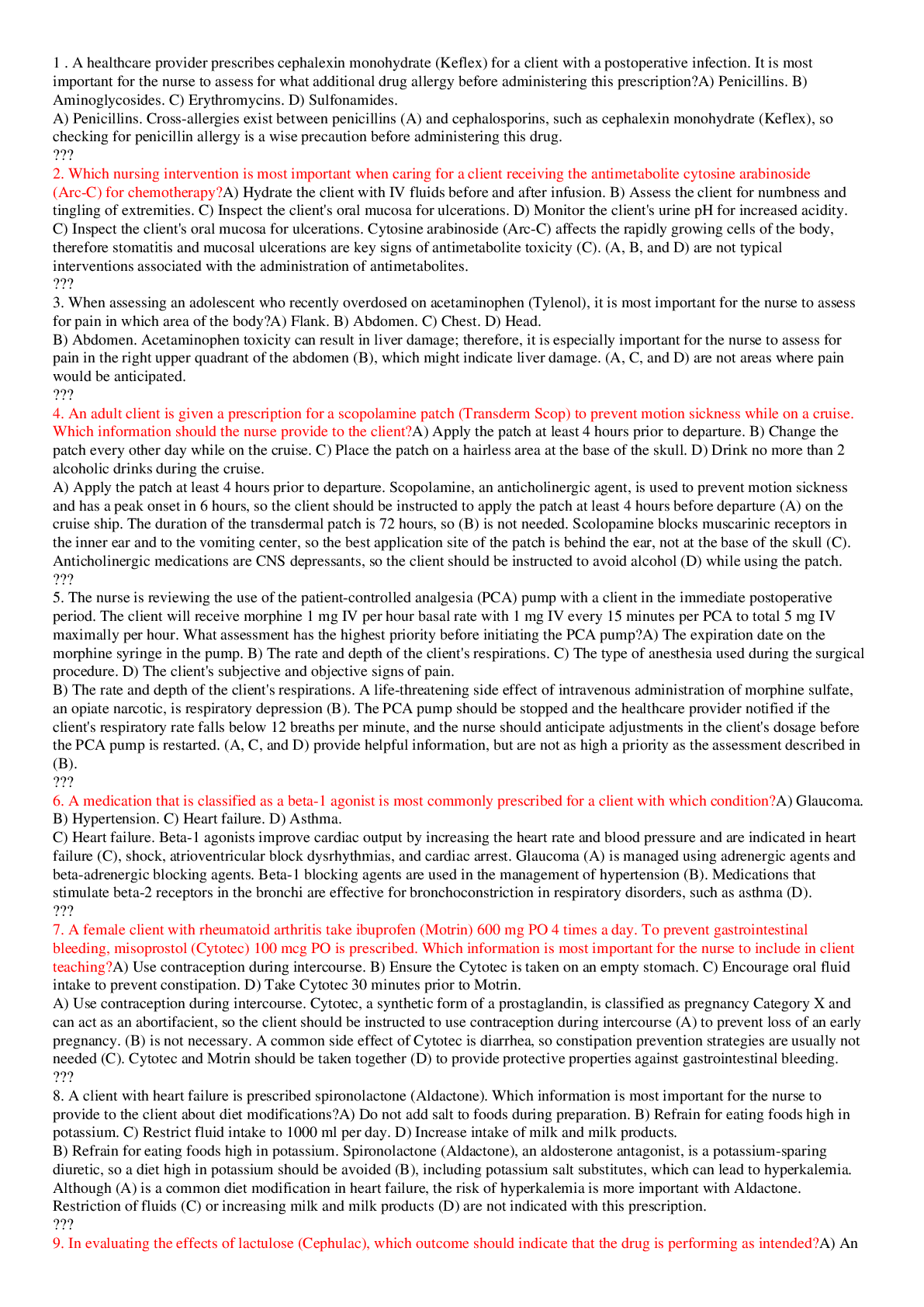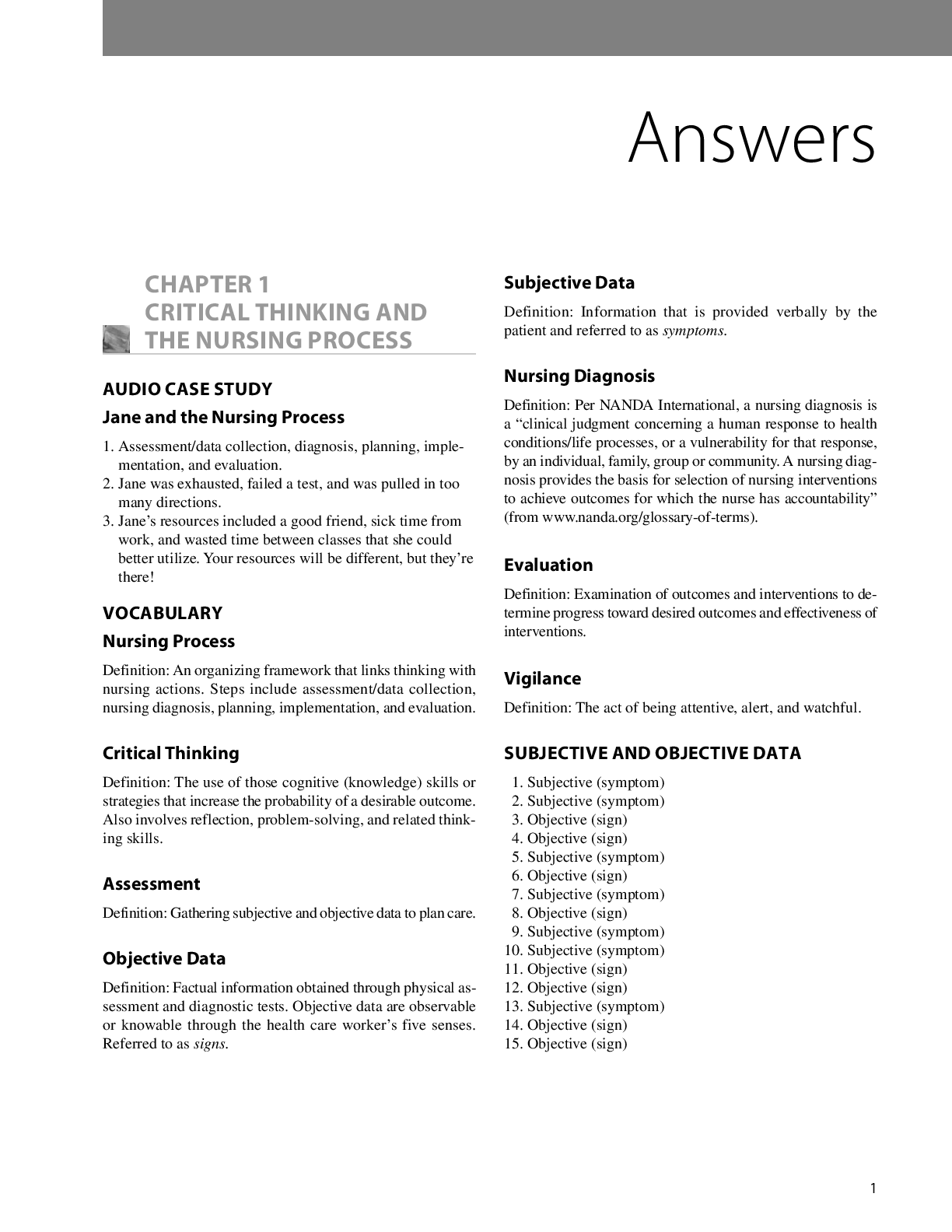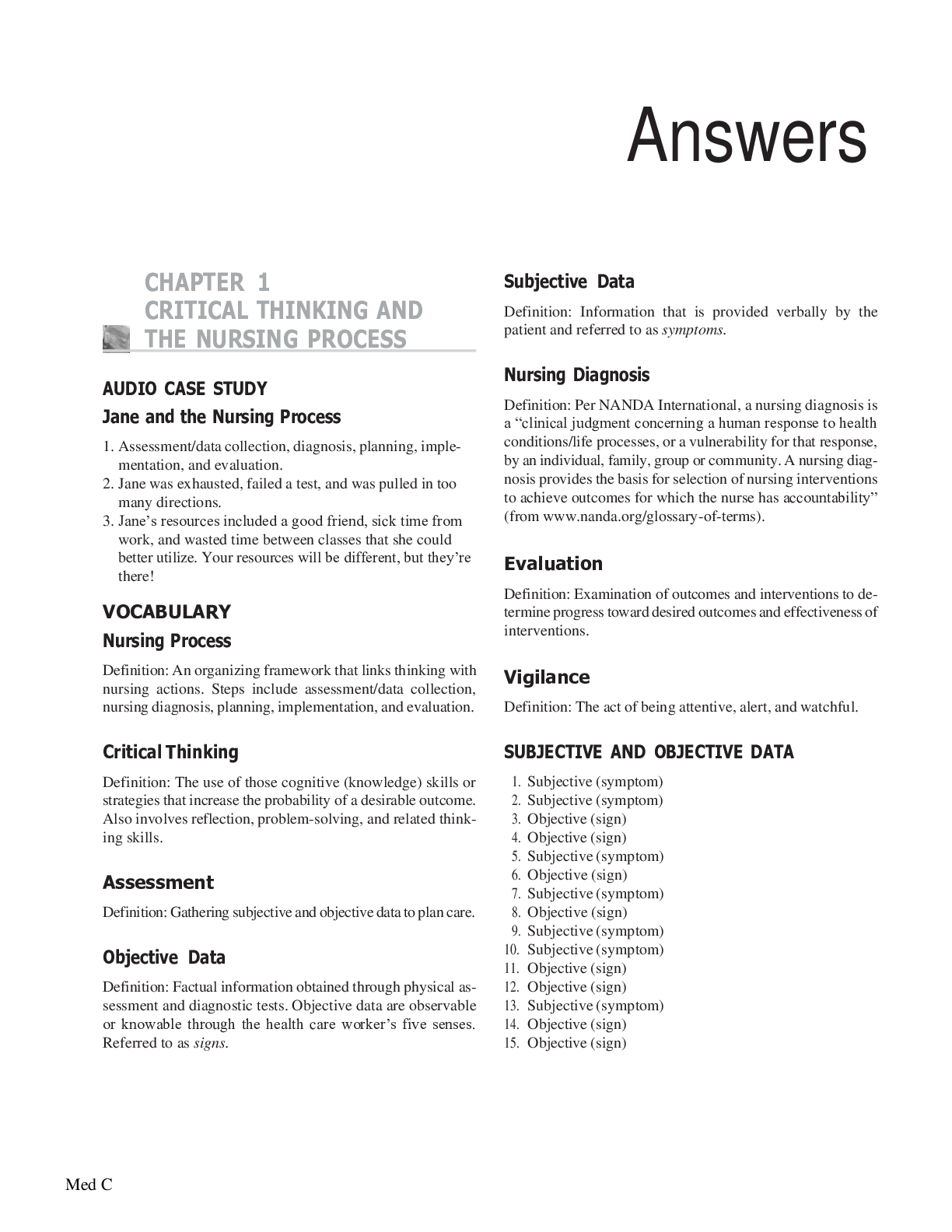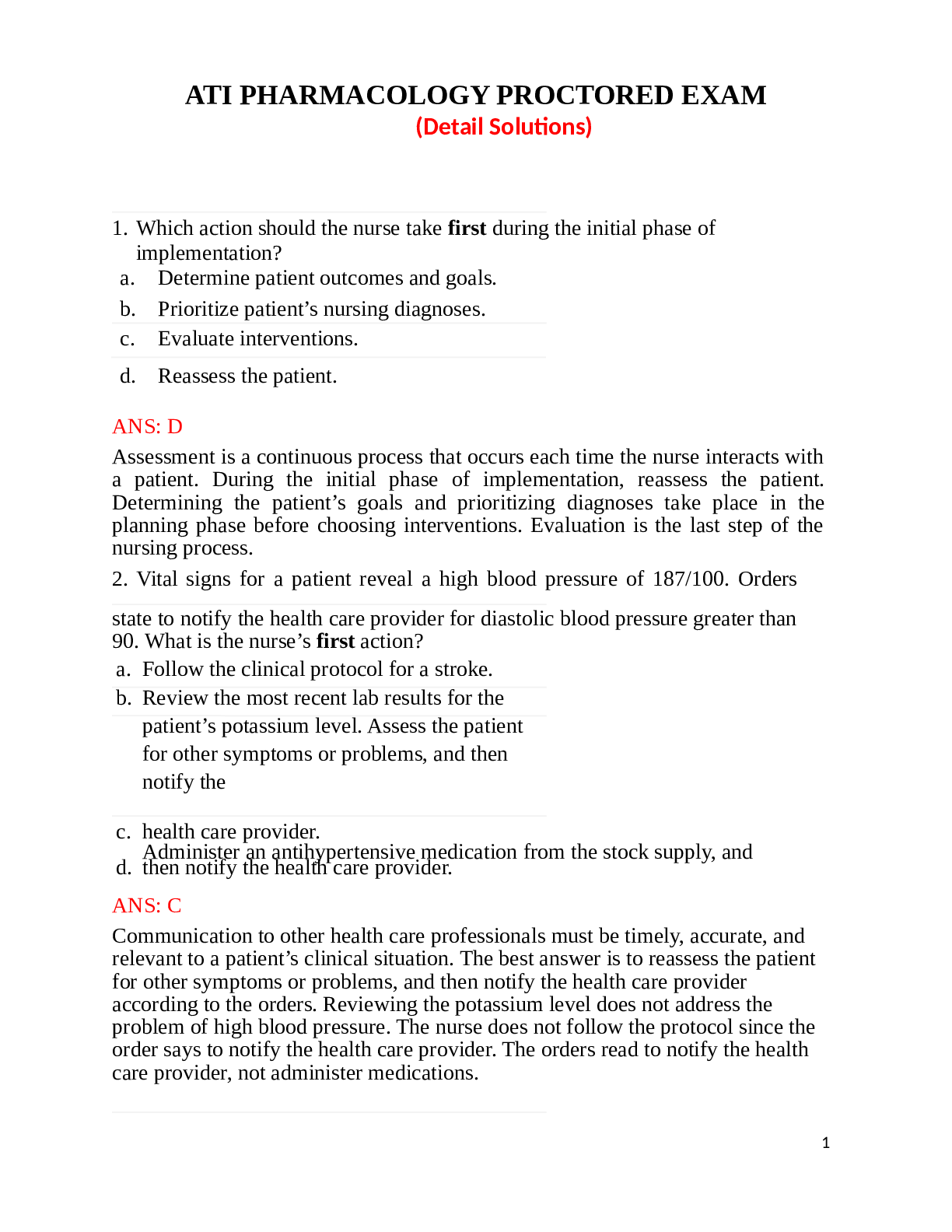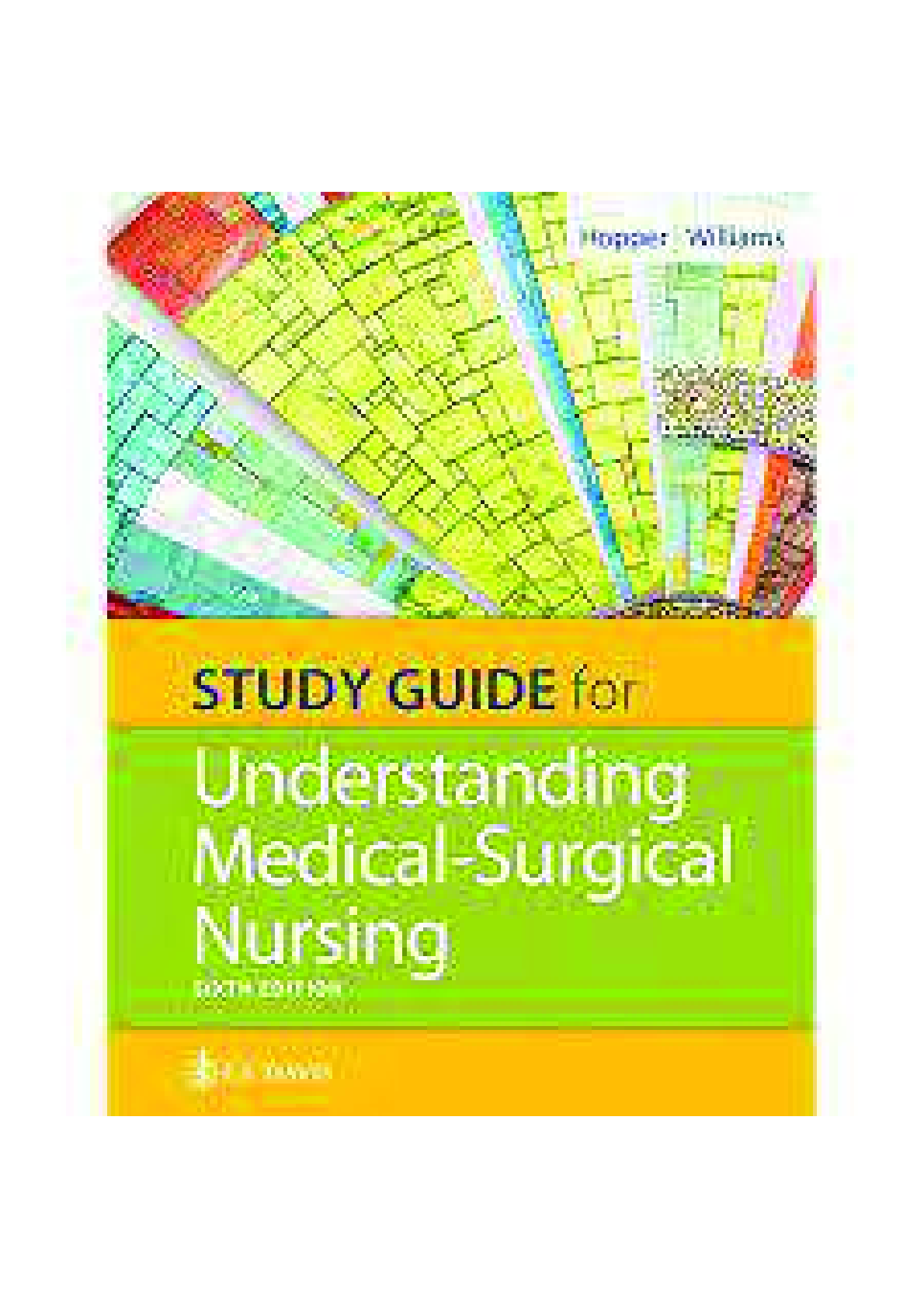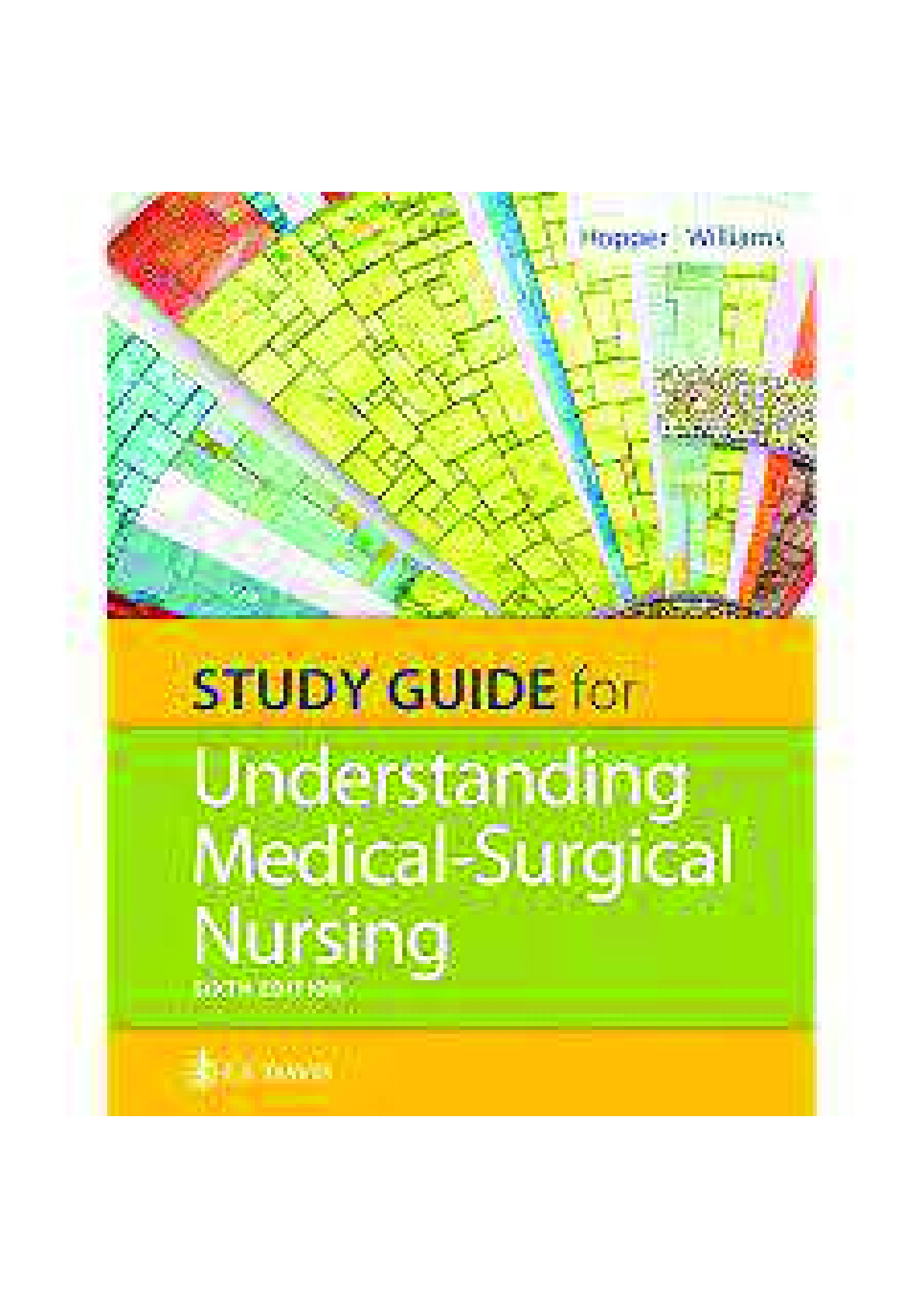*NURSING > STUDY GUIDE > STUDY GUIDE FOR UNDERSTANDING MEDICAL SURGICAL NURSING, 6th Edition Answers. (All)
STUDY GUIDE FOR UNDERSTANDING MEDICAL SURGICAL NURSING, 6th Edition Answers.
Document Content and Description Below
CHAPTER 1 CRITICAL THINKING AND THE NURSING PROCESS AUDIO CASE STUDY Jane and the Nursing Process 1. Assessment/data collection, diagnosis, planning, implementation, and evaluation. 2. Jane was ... exhausted, failed a test, and was pulled in too many directions. 3. Jane’s resources included a good friend, sick time from work, and wasted time between classes that she could better utilize. Your resources will be different, but they’re there! VOCABULARY Nursing Process Definition: An organizing framework that links thinking with nursing actions. Steps include assessment/data collection, nursing diagnosis, planning, implementation, and evaluation. Critical Thinking Definition: The use of those cognitive (knowledge) skills or strategies that increase the probability of a desirable outcome. Also involves reflection, problem-solving, and related thinking skills. Assessment Definition: Gathering subjective and objective data to plan care. Objective Data Definition: Factual information obtained through physical assessment and diagnostic tests. Objective data are observable or knowable through the health care worker’s five senses. Referred to as signs. Subjective Data Definition: Information that is provided verbally by the patient and referred to as symptoms. Nursing Diagnosis Definition: Per NANDA International, a nursing diagnosis is a “clinical judgment concerning a human response to health conditions/life processes, or a vulnerability for that response, by an individual, family, group or community. A nursing diagnosis provides the basis for selection of nursing interventions to achieve outcomes for which the nurse has accountability” (from www.nanda.org/glossary-of-terms). Evaluation Definition: Examination of outcomes and interventions to determine progress toward desired outcomes and effectiveness of interventions. Vigilance Definition: The act of being attentive, alert, and watchful. SUBJECTIVE AND OBJECTIVE DATA 1. Subjective (symptom) 2. Subjective (symptom) 3. Objective (sign) 4. Objective (sign) 5. Subjective (symptom) 6. Objective (sign) 7. Subjective (symptom) 8. Objective (sign) 9. Subjective (symptom) 10. Subjective (symptom) 11. Objective (sign) 12. Objective (sign) 13. Subjective (symptom) 14. Objective (sign) 15. Objective (sign) CRITICAL THINKING This is just one possible way to complete a cognitive map. 2 Chapter 1 Answers Could it be low blood sugar? Am I diabetic? Frontal area Sometimes feel sick to stomach Mother is diabetic Patient's perception Where is it? Useful other data "Sick" feeling Hard Quality Severity Timing 7–8 on 0–10 scale Lasts 1–2 hours once starts Early in the morning Before meals Food helps Tylenol helps Hunger makes it worse Aggravating and alleviating factors Headache REVIEW QUESTIONS—CONTENT REVIEW The correct answers are in boldface. 1. (3) is a nursing diagnosis. (1, 2, 4) are medical diagnoses. 2. (1) is a medical diagnosis. (2, 3, 4) are nursing diagnoses. 3. (1) is correct. The nurse who keeps trying until the problem is solved is exhibiting perseverance. (2, 3, 4) are incorrect. 4. (3, 4, 5, 1, 2) is the correct order. 5. (1) is the best definition. (2, 3, 4) do not define critical thinking but are examples of good thinking. REVIEW QUESTIONS—TEST PREPARATION The correct answers are in boldface. 6. (4) is correct. Evaluation determines whether goals are achieved and interventions effective. (2) is the role of the physician. (1, 3) encompass data collection and implementation, which are earlier steps in the nursing process. 7. (1) is correct. The licensed practical nurse/licensed vocational nurse can collect data, which includes taking vital signs; assessment is the first step in the nursing process. (2, 3, 4) are all steps in the nursing process, for which the registered nurse is responsible; the licensed practical nurse/licensed vocational nurse may assist the registered nurse with these. 8. (1, 4, 5) can be observed through use of the five senses. (2, 3) are subjective data that the patient must report. 9. (2) indicates that the patient is concerned about freedom from injury and harm. (1) relates to basic needs such as air, oxygen, and water. (3) relates to feeling loved. (4) is related to having positive self-esteem. 10. (4) is objective, realistic, and measurable with a time frame. (1, 2, 3) are all good outcomes, but they relate to airway clearance, nutrition, and strength, not directly to swallowing. 11. (2) is correct. The three parts of a diagnosis include the problem (from the NANDA International [NANDA-I] list), etiology (“related to”), and symptoms (“as evidenced by”). (1) does not include symptoms. (3) is a medical diagnosis. (4) is not a NANDA-I diagnosis, and the evidence is not related to dyspnea. 1 Answers CHAPTER 2 EVIDENCE-BASED PRACTICE AUDIO CASE STUDY Marie and Evidence-Based Practice 1. Thirdhand smoke is the dangerous toxins of smoke that linger on hair, clothing, furniture, and other surfaces in an area after a cigarette is put out. Marie learned that exposure to these toxins can be neurotoxic to children and can trigger asthma attacks in sensitive people. 2. Evidence-based practice is considered the gold standard of health care. 3. Step 1: Ask the burning question. Step 2: Search and collect the most relevant and best evidence available. Step 3: Think critically. Appraise the evidence for validity, relevance to the situation, and applicability. Step 4: Measure the outcomes before and after instituting the change. Step 5: Make it happen. Step 6: Evaluate the practice decision or change. 4. Combination therapy with a nicotine patch and nicotine lozenges worked best, although bupropion (Zyban) and nicotine lozenges worked well, too. A Cochrane Review found that advice and support from nursing staff can increase patients’ success in quitting smoking, especially in a hospital setting. VOCABULARY 1. Evidence-based practice: A systematic process that uses current evidence in making decisions about patient care. 2. Evidence-informed practice: Consideration of patient factors along with the use of evidence for shared decisionmaking between the health care provider and the patient. 3. Randomized controlled trials: True experimental studies in which as many factors as possible that could falsely change the results are controlled. 4. Research: Scientific study, investigation, or experimentation to establish facts and analyze their significance. 5. Systematic review: A review of relevant research using guidelines. 6. Health literacy: Degree to which a person has the capacity to obtain, process, and understand basic health information and services to make the best-informed health decisions. EVIDENCE-BASED PRACTICE 1. proof 2. context 3. quality 4. care 5. randomized 6. outcomes 7. gold 8. nursing 9. patient’s 10. information CRITICAL THINKING 1. By questioning the existing way of doing things to ensure that the patient receives the best care possible. 2. A thorough search of the literature in the area of music therapy. 3. Cumulative Index to Nursing and Allied Health Literature (CINAHL) Database, Joanna Briggs Institute evidence-based resources, Cochrane Reviews, Medline/PubMed. 4. Measure patient outcomes before instituting the evidence-based change in practice so comparisons can be made after implementation to determine if the intervention worked. 5. Evaluate the results to determine whether the change made a significant difference and if it was worthwhile in terms of cost and time. [Show More]
Last updated: 1 year ago
Preview 1 out of 145 pages

Reviews( 0 )
Document information
Connected school, study & course
About the document
Uploaded On
Jan 05, 2022
Number of pages
145
Written in
Additional information
This document has been written for:
Uploaded
Jan 05, 2022
Downloads
0
Views
228

